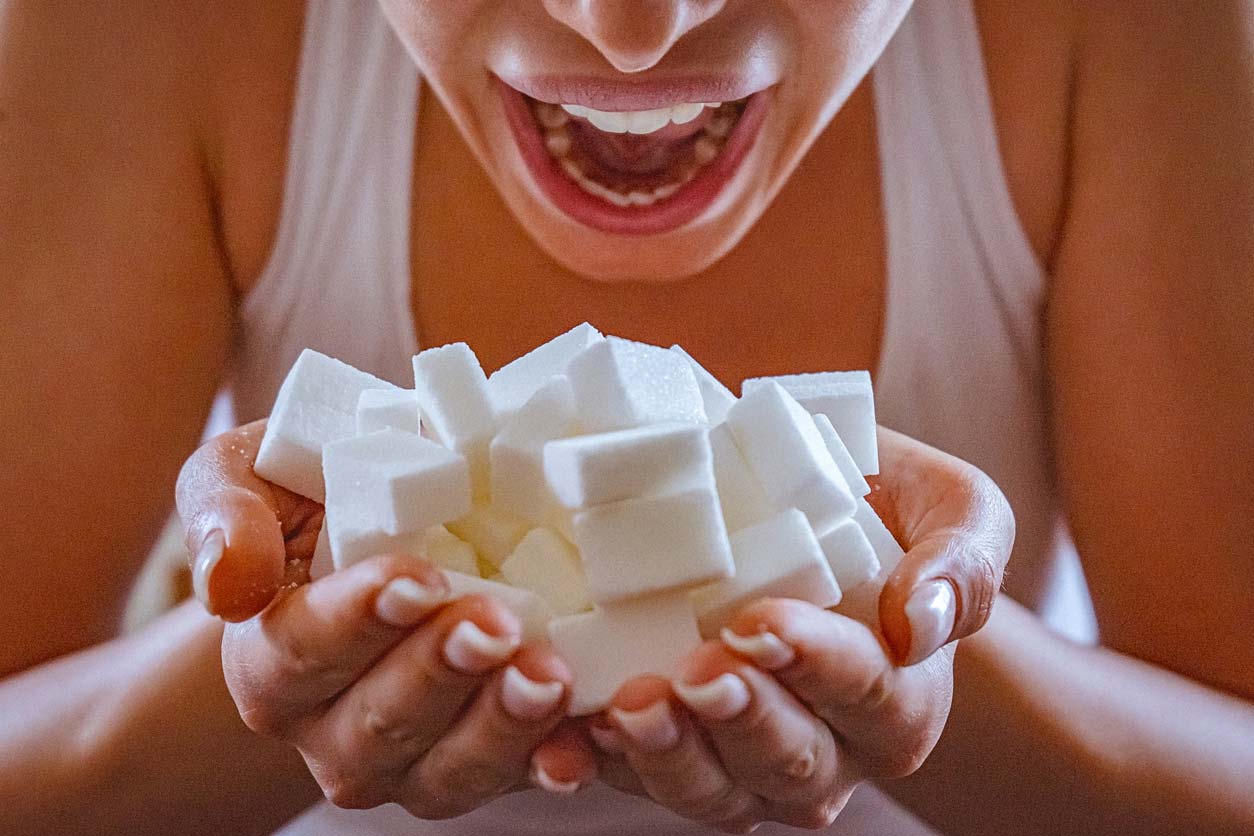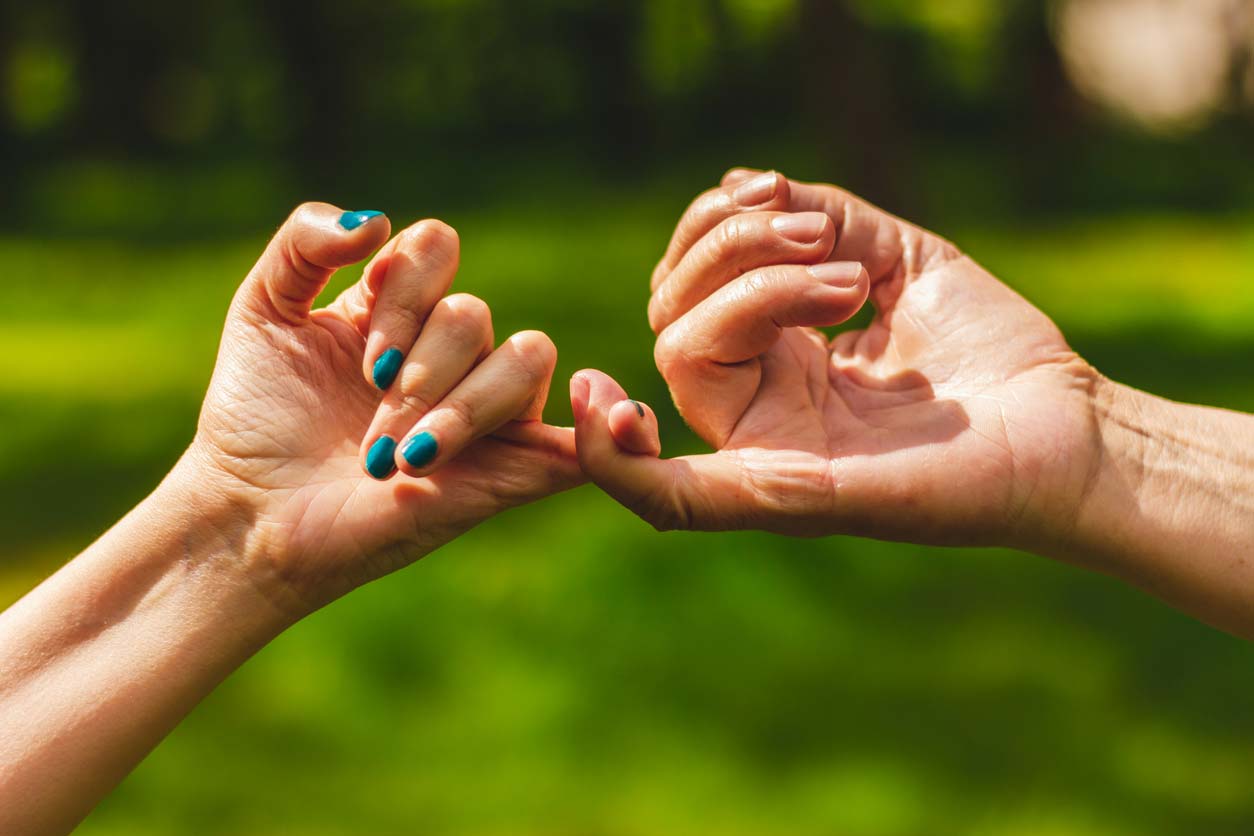By Michael Klaper, MD • A version of this article was originally published on doctorklaper.com.
There you are, finding yourself knee-deep in Temptation City. Platters of chocolate chip cookies, lovingly-baked and fresh from the oven, coyly call to you. Servings of sherbet shimmer seductively. The creamy pie looks especially good tonight. How do you fortify yourself against these pitfalls?
Now, I wish that I could say that if you eat a clove of raw garlic in the morning and wear a rutabaga around your neck all day, you will never be tempted by sugary desserts. (Come to think of it, if you eat garlic in the morning and wear a rutabaga around your neck, you probably won’t be getting many party invitations, anyway, so it might not be such a bad strategy after all!)
But, seriously, I have been cursed with one of the most voracious sweet tooths (is the plural of “sweet tooth” really “sweet teeth?”) in history. Until my nutritional understanding grew to a point when most sugary treats just no longer seemed as appetizing to me, any dark chocolate bar or vegan cookie within arm’s reach was in mortal danger. Yet, they are safe in my presence now (and I’m safe in theirs!).
What’s armed me with such fortitude? Why don’t I eat the cookies and the devil’s food cake this year? Because I know what they are!
The Problem with Sugar as a Food
To arm oneself with this sword of knowledge, a little sweet chemistry understanding is called for. Sugars do taste good, and there is no problem in enjoying the naturally occurring fructose in whole, fresh fruits. The problem is in eating sugar as a food! When you are holding a cookie in your hand, a piece of cake, or a candy bar, you are holding a chunk of sugar in your hand. You would not consider going over to the sugar bowl and shoveling tablespoons of the white stuff into your mouth, would you? But here you are, actually considering eating this large chunk of sugar as a food.
If you do eat it, within minutes, your bloodstream is flooded with sugar. Soon, the structural proteins in all your tissues – the elastic fibers of your skin, the hemoglobin in your blood, the filter membranes in your kidneys, the inner lining of your blood vessels, the lenses of your eyes – all get “sticky” with sugar (the chemists say they become “glycosylated.”) In the 98.6° F metabolic “oven” of our body, the sugars and proteins melt together and oxidize, like the browning of bread crust (called the “Maillard reaction.”)
These oxidized, damaged, and congealed proteins, officially called “Advanced Glycation End-products,” do not function normally. The gummed-up, oxidized protein fibers break, skin cracks in the sunlight; eyes become less permeable to light; muscle proteins do not contract as vigorously; brain function dwindles – sound familiar? The aging process, perhaps? EATING SUGAR AGES US! (Remember, the acronym for “Advanced Glycation End-products” is AGEs!)
Just Say No to AGEs
So, as my eyes fall upon the plate of cookies or candy, I actually flash the image in my mind of myself eating it. And I simultaneously think, “This is a chunk of sugar in my hand. This stuff ages me. It makes my skin crack, my arteries stiff, and it leads me towards frailty and Alzheimer’s disease. Do I really want to eat it? Is it really worth it?”
I also know, after having indulged far too many times in the same sugary seduction, that I am always physically sorry after I eat it. That is, it is guaranteed that within 15 minutes of eating the cake or candy, I will have that sickly, light-headed, slightly nauseated “I can’t believe I just ate all that sugar” feeling coursing through my body.
Nope. Not this time.
“Been there. Done that. Got the tissue aging. Don’t need to do that anymore…”
It is said, “The truth shall set you free.” And the truth is, whether mixed with fat, as in ice cream, or baked into pies, candies, and cakes, or dissolved into soft drinks, refined sugars are sweet poison. Like the poisoned apple in Sleeping Beauty, sugary treats taste good upon the tongue, but silently and relentlessly, they damage us.
Sugary treats taste good upon the tongue, but silently and relentlessly, they damage us. – Dr. Michael Klaper
Avoiding Sugary Temptation
Fortunately, if you look around, there is usually a safer, more wholesome way to appease your sweet tooth. There is almost always fruit available at festive gatherings. But to make sure, bring some grapes, melon chunks, or almonds in a discrete container to munch on instead of the sugary seducers. (Of course, eating a hearty, plant-based meal at home before you go out to party will also make you less likely to nibble on handy but unhealthy treats while you are out.)
It also helps to remember that temptation is usually place-specific, that is, while the visual cue is right in front of you. I know that if I move away from the site of temptation and actively do something else for five minutes, my mind lets the sugary treat go in order to focus on the current conversation or task in front of me. I know that if I keep walking past the bakery or the sweets table at the party, the sights, smells, and temptations will fade away in a few minutes.
So, at the festivities, move to a different part of the room, have some of the food or trail mix you brought with you, strike up a conversation with an interesting person, and let your mind move on to something less detrimental to your health.
An especially powerful strategy that worked for me recently was to understand the power of commitment and abstinence. (I know what you are thinking, “Uh-oh, here comes the dreary part.” But read on; this turns out to be a joyful, empowering strategy.)
Having an Accountability Partner
It began at the end of a talk given by Rory Freedman, author of Skinny Bitch. She said, “If you can do without a seductive food for a month, you will seriously reduce, or eliminate altogether, your desire for that substance. So, turn to the person next to you, lock pinky fingers with him or her, and both of you vow to help the other overcome their next food stumbling block over the next month.”
The person to my left was Ann Wheat, co-owner of the Millennium Restaurant in San Francisco. And without hesitation, we both locked pinkies and said, “Let’s both stop eating sugar!”
From that point on, we were “pinky buddies.” And whenever I would be tempted by a chocolate treat or piece of vegan devil’s food cake, I would think of Ann’s smiling face and earnest effort and say, “No, I’m going to stay strong because I know I will be talking to Ann soon. And I don’t want to let her – or me – down.”
So, the month went by with this simple commitment steeling me through each moment of temptation. As the weeks sped by, my viewing of chocolate – and my desire for it – significantly changed. I saw it for the fatty chunk of congealed sugar that it is. And I lost my desire to eat it. Tastes certainly do change! So, another way to make your “sword” even more powerful is to make it through a month without eating your “problem” food, and see if you don’t feel less driven to eat it after that time.
Dust Yourself Off & Try Again
Finally, if you do find yourself absolutely unable to resist tasting a given treat, and you do have a bite or a whole cookie, don’t panic. Don’t regard yourself as a failure. And above all, don’t say, “Well, I’ve blown it now, so I might as well eat every bad thing in sight.” Rather, make it a reinforcing learning experience. Yes, you put it in your mouth and are eating it. So, taste it for what it is – congealed sugar on your tongue. Then say, “Yep, that tastes like the chunk of sugar I knew it was, and I don’t want to eat any more of it.”
It is OK not to finish the piece of cake or eat the entire gooey chocolate caramel. No penalty for that confirmatory bite – just fully taste it, decide you got the taste sensation you came for, and that you don’t need to eat any more of it. Put it down, find a healthier Eat to Live (ETL) alternative (melon chunk, anyone?), and rejoice that your inner fortitude just got stronger.
As you demonstrate this power to yourself over and over, you will find yourself to be like the mighty lion or lioness, who, as they stride through the forest, are not distracted by the frogs of temptation that croak at them from under the leaves.
To your good health and happiness,
Dr. Michael Klaper
Tell us in the comments:
- Were you aware that sugar ages you?
- How do you avoid sugar temptation & work to slay the sugary beast?
- Do you have an accountability partner or “pinky buddy” you can make a commitment to?
Feature image: iStock.com/spukkato







